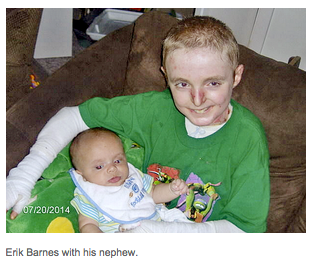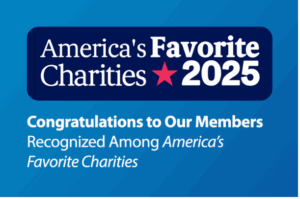Sarah Ford | October 28, 2014
‘Disease you’ve never heard of’ does not stop 10-year-old and family seek better treatment, cure
By Patti Borda Mullins
White gauze bandages cover 10-year-old Erik Barnes from neck to toe every hour of every day, except right after a bath.
Layers of antibacterial materials, padding and bandage protect raw wounds and try to prevent others caused by the genetic condition he has called recessive dystrophic epidermolysis bullosa.
A bath can be a 5-hour process, twice or three times a week. Soaking in soothing salt water for an hour helps loosen the bandages that tend to stick to the chronic, blistered and oozing wounds that may erupt anywhere on Erik’s body.
“He’s had one bath in his life I can remember that he didn’t have any wounds,” his mother said, sitting at the kitchen table in Keymar.
Then comes the bandaging. Kathy Barnes must spend hours wrapping her son, first covering open wounds with non-stick silicone and antibacterial layers.
While that goes on, Erik said he usually watches some episodes of “Teenage Mutant Ninja Turtles.”
On days that Kathy does not bathe him, she checks the bandages for signs of infection and changes some as needed.
Kathy and her husband Perry have three grown children and have become therapeutic foster parents, which means they care for children with special needs. The family met Erik when he was 9 months old, and he was their first foster child.
Kathy and her mother Betty Foster, a nurse, visited Erik three times a week to learn how to care for him before they brought him home at 10 months old. The Barneses, who live in Foster’s house, adopted Erik when he was 2.
There are three types of inherited EB, and Erik has recessive dystrophic EB, one of the most severe types, according to Geri Kelly, a nurse educator with the Dystrophic Epidermolysis Bullosa Research Association of America.

Get Resources and Insights Straight To Your Inbox
Explore More Articles
Congratulations to Our Members Recognized Among America’s Favorite Charities
Each year, The Chronicle of Philanthropy releases its list of America’s Favorite Charities—the 100 nonprofits that raise the most from individual donors, foundations, and corporate…
Read ArticleThe Future of Corporate Giving: How Nonprofits Can Prepare
Corporate giving is a valuable part of the nonprofit funding ecosystem. Companies large and small have incorporated philanthropic efforts into their overall business plans, from…
Read ArticleJoin Us at the Workplace Fundraising & Volunteering Summit!
We’re excited to announce that America’s Charities President, Jim Starr, and Board Member, Fernando Lorence of JP Morgan Chase, will be speaking at the Workplace…
Read ArticleGet Resources and Insights Straight To Your Inbox
Receive our monthly/bi-monthly newsletter filled with information about causes, nonprofit impact, and topics important for corporate social responsibility and employee engagement professionals, including disaster response, workplace giving, matching gifts, employee assistance funds, volunteering, scholarship award program management, grantmaking, and other philanthropic initiatives.




